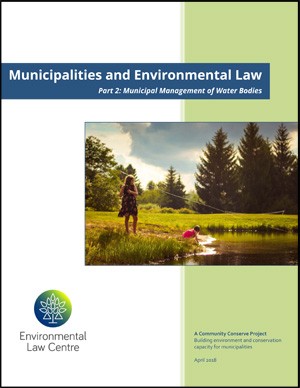Alberta’s water bodies are a valuable resource; their regulation and proper management is essential for safe drinking water, healthy aquatic ecosystems, watershed resiliency, among other things. The second publication in the Environmental Law Centre’s Municipalities and Environmental Law Series for the Community Conserve Project explores when and how municipalities can regulate the water bodies within their boundaries. Section 60(1) of the Municipal Government Act(MGA) purports to give municipalities “the direction, control, and management of the bodies of water within the municipality”. However, plenty of questions arise about the extent of this authority:
- What constitutes a “body of water”?
- Can they be permanent, temporary, or seasonal?
- What about natural versus man-made?
The MGA also permits municipalities to regulate the land around water bodies using their general bylaw-making powers, land-use planning and subdivision powers, zoning powers, and municipal wetland policies. Questions related to these powers may include:
- How are these powers exercised and how are they constrained?
- Is municipal authority in these areas subject to any conflicting federal or provincial legislation?
For answers to these questions and more, see “Municipal Management of Water Bodies” by clicking here.
Community Conserve is a municipally focused initiative supported by the Miistakis Institute, the Environmental Law Centre, the Alberta Urban Municipalities Associations, and RMA. Community Conserve only works if municipal personnel participate. Municipal personal can post new ideas for projects or vote on the ideas already there – no registration required! The Community Conserve team converts the ones with the most votes into Project Plans, and posts them back on the site. If a project looks like it will help your municipality, and you think you can help fund it, go to Fund a Project and let Community Conserve know you are thinking about it - www.communityconserve.ca






